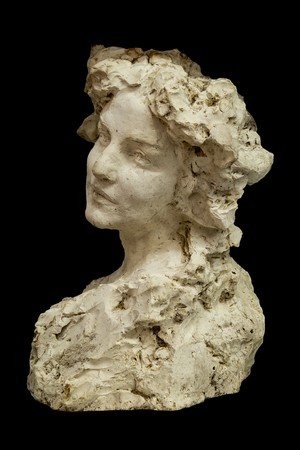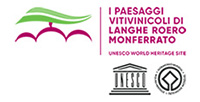
Civic Museum - Gipsoteca "Leonardo Bistolfi"


The Gipsoteca of Leonardo Bistolfi (from the Ancient Greek Gypsos, plaster), located on the ground floor of the Museum, has over one hundred seventy pieces of terracottas, sketches, clays, rough sketches and models in plaster, some marble and bronze objects, most donated by Casale’s banker Camillo Venesio (1958) and later integrated with donations and pieces from storage.
These materials allow to understand the different phases of Bistolfi’s artistic method, who is one of the biggest representatives, on an international level, of the Simbolismo movement: from the clay sketch where the sculptor defines his first intuition, to the following sketch in plaster, until the final model that establishes the complete idea and constitutes the actual creation of the piece, before the transposition to marble or bronze.
The exhibition documents Bistolfi’s difficult artistic path: from the start that connects him to the contemporary experiences of Lombardy’s Scapigliatura movement – Gli amanti (1883) – interrupted from small groups of Verista influence – Il boaro (1885) – to the processing of his own way of expression, where shape and symbol give life to a very personal poetic that will find its place in many works for both private and public clients, most of which related to funerary and celebratory sculptures.
La Sfinge (1890), made for the Pansa Funerary Monument in Cuneo, will define him as a proper “Simbolista” sculptor, followed by memorable works such as Il dolore confortato dalle memorie (1898) or Il funerale di una vergine (1899) or still Resurrezione (1902) and La Croce (1899). Other famous works include the celebratory monuments made for Giovanni Segantini (1899), Giuseppe Zanardelli (1908), Cesare Lambroso (1921), Giosuè Carducci (1908-1928) and those for Giuseppe Garibaldi (1908 and 1928), to which should be added many more portraits and commemorative plaques.
-
Leonardo Bistolfi - Biography

Leonardo Bistolfi was born in Casale Monferrato on the 15th of March in 1859. His father, Giovanni, was a sculptor and wood carver. Leonardo won a scholarship from the city of Casale Monferrato in 1874 to attend the Brera Academy in Milan. He shared the experience of the turbolent times in the city with his classmates Segantini, Previati and Sottocornola. Wanting to study with the sculptor Odoardo Tabacchi, he moved to Turin, and immediately began partecipating in the annual exhibitions of the Società Promotrice di Belle Arti with small groups of Verista inspiration (Boaro, Piove, Terzetto).
Keep reading... -
La Gipsoteca - Sala I

The first rooms opens, to the left, with Il Boaro, which is a work with Verista inspirations that allows the visitor to understand the three steps of developing a piece: the terracotta sketch, the model in plaster and the final translation to bronze.

Among the pieces of the exhibit, there are the model and sketch of Il dolore confortato dalle memorie from the Durio monument in Turin, one of the best examples of funerary sculptures started by Bistolfi in the 1890s.

Visitors can also find the pieces used to make La Sfinge for the Pansa tomb in Cuneo, exemplary work of the “death poem” which will be inspiration to all his following funerary works.

At the end of the room, there is the model for the commemorative monument to the painter Giuseppe Segantini, La Bellezza liberata dalla Materia o L’Alpe in Saint-Moritz: it is an imposing womanly figure that appears to emerge from stone, reminding the visitor of the mountains that the painter used to love. To complete the sculpture, there used to be two low reliefs with sheeps and the goddess Art.
-
La Gipsoteca - Sala II

In the second room, the sketch of the Monumento pubblico a Giosuè Carducci occupies most of the space. This work was commissioned by the city of Bologna to celebrate the poet’s Nobel Prize and it took twenty years for Bistolfi to complete the work. This piece involves, starting from the left, the sections L’Amore per la Natura, il Trittico and Sauro Destrier della Canzone but it is missing the sculpturial portrait of Carducci, which is located at the centre in the final monument. The huge model for Il Trittico occupies the entire wall of the exhibition room: it is an allegoric summary of the poet’s literary activity and Bistolfi’s creative process. It is especially evident the ability of the sculptor to create the monument’s figures while still having decorative additions, later improved upon in Sauro Destrier where there’s a movement reminding the viewer of Boccioni’s futuristic horses.

At the end of the room there is a rare and unusual representation of the crucified Christ, not suffering but ready for Resurrection: the Croce Brayda, part of the funerary monument in Villarbasse. After a recent 5-year temporary deposit offered by Banca Patrimoni Sella & C. , the exhibition now has a small bronze plaque reproducing the detail of the Cristo’s head, testament to the iconographic success that the piece had at the time. This work comes from the Bricherasio family collection, for whom Bistolfi made the extraordinary and emotionally-charged sepulchre for Emanuele Bricherasio, to this day still well preserved in Fubine.
-
La Gipsoteca - Sale III, IV e V

In the next three rooms, visitors can see the model for the Hofmann monument in Turin with the exedra structure typical of the sculpture's production of the later years: three female figures symbolize Pain, Poetry and Love, represented in their respective full-size model.

The models for two different monuments celebrating Giuseppe Garibaldi, created for Savona and Sanremo and the heart wrenching model, known as Resurrezione, for the tomb of Herman Bauer in Genova, in which the young departed is lovingly accompanied in his journey from life to death by three delicate figures surrounded by flowers. From the sculptures of great Symbolistic splendour, made by Bistolfi at the beginning of the 1900s, there are also the models for the Tomba Toscanini and the funerary monument of Erminia Cairati Vogt, in which the body of the young departed is enveloped in a vortex of veils and roses.

Noticeable because of its dimensions, the model for the Monumento ai Caduti of Casale Monferrato, a piece focused on the stern and composed soldier in juxstaposition with the figure of Italian Spring, a symbolic image of the italian rebirth after the war.

The exhibition tour ends with two works recently restored thanks to the contribution of the Associazione Ondasonora in Alessandria: a charcoal drawing of Ritratto del musicista Luigi Ernesto Ferraria, donated in memory of “Alberto Savio, antiquario”, and the plaster bust of Beethoven from the private collection of Ferraria himself, owner of a large house in the Biella region, where Bistolfi used to spend the rare moments of rest inbetween the many professional commitments.
-
The latest Bistolfi donation
In January 2021, the Gipsoteca of Casale Monferrato received from madame Vanda Martelli widow Bistolfi the precious “Leonardo Bistolfi Collection”, consisting of works directly produced by the artist himself and other items from artists of the same time period.
The collection is made of a heterogeneous body of artworks such as sculptures, paintings, drawings: some of these directly match pieces already available in the Gipsoteca exhibition, others add to the collection with never-before-seen pieces.
In particular, the donation consists of about 250 sculptures mainly in plaster, other example of plastic art made with terracottas, metal, bronze and plasticine. There are also fifty landscapes painted on wooden tablets and a wide variety of pieces showcasing his ability with graphic art: 300 drawings (of different sizes), 35 notebooks witch sketches, notes, poetry and bill sums that allow for a reenacment of the pieces design and his artistic life, other than a collection of miscellany and memorabilia.
The collection is also made of:
• unreleased writings by Bistolfi;
• his library with precious art history books and illustrated vintage literature, often signed;
• vintage photographs of his artworks (from the clay project to the final piece) and his own cultural and fanily world;
• the history of how his pieces were received by the public (from his debut, updated until 2018 by his nephew Andrea)
• the epistolary.
To add to the collection, there is a series of pieces done by other relevant artists of the time that are a testament to his many friendships among his peers.
Casale Monferrato, native city of the artist, is therefore elevated by such a collection that, in its entirety and thoroughness, represents an unprecedented cross section of art history between the 18th and 19th century.
The Museum staff is working so that the collection can be safely transferred in the rooms of the ex monastery of Santa Croce, already location of the Museum. Following this move, there are necessary maintenance plans already in place that will be carried out by specialized art restorers. Then, after the inventory and arrangement of the exhibit, it will become a “visitable deposit” inside the room “Sala delle Lunette”, conveniently furnished.
Funding for the Bistolfi project is provided by two notable Piemonte accounts: the Fondazione Cassa di Risparmio di Alessandria and the Fondazione CRT to whom the city of Casale expresses its deepest gratitude for the support.

Press releases following the milestones of the acquisition of the Bistolfi donation (IT Version) -
Head of a Woman

Leonardo Bistolfi
Head of a Woman
1910 ca.
plaster
This Head of a woman, a work of exceptionally high quality, was discovered during the removal from Turin to Casale Monferrato, of the entire collection of Andrea Bistolfi, which his widow Vanda Martelli donated, in his name, in 2021. The bust was executed in marble, (now in a private collection and dated 1914 on a document in the Bistolfi Archive), as can be seen from the numerous pencil marks on the plaster surface necessary for its transfer. It has recently been restored thanks to the generous contribution of the Casale Monferrato branch of Soroptimist International.
Click here -
Digital map of the artworks of Leonardo Bistolfi in Italy and worldwide
The map includes the location of all artworks by Casale's artist Leonardo Bistolfi, available in Italy and around the world, displayed in museums, academies, collections and public institutions.
Keep reading...

